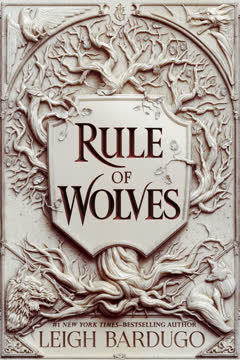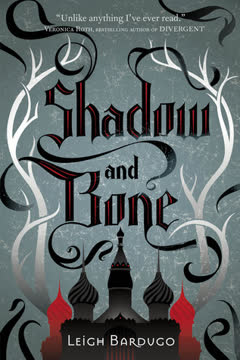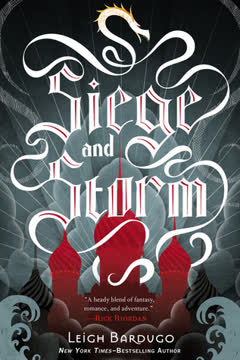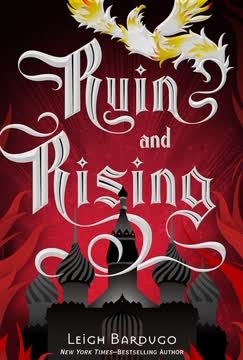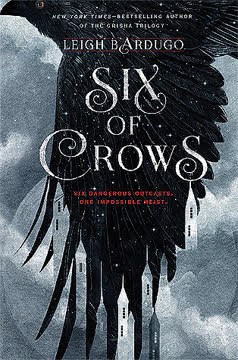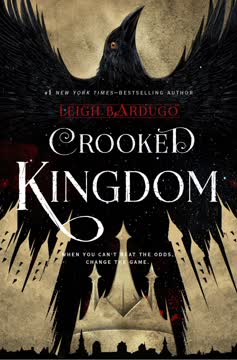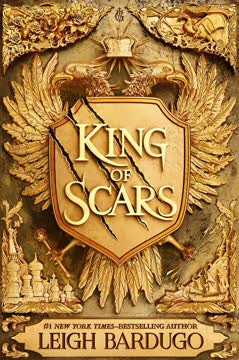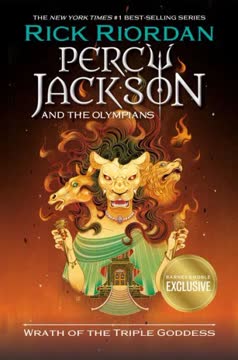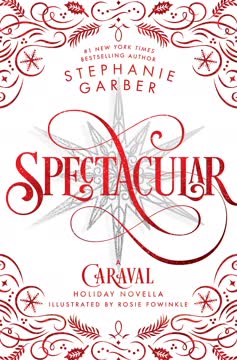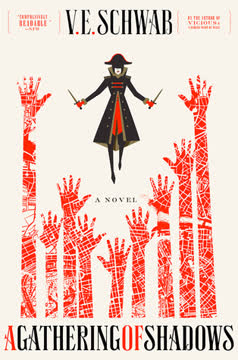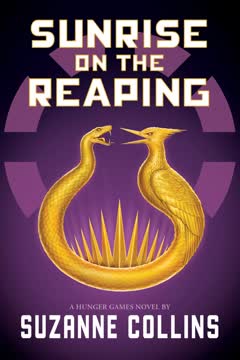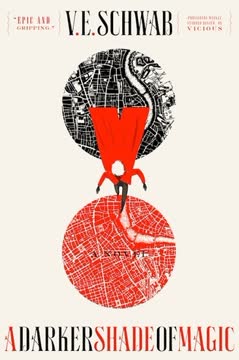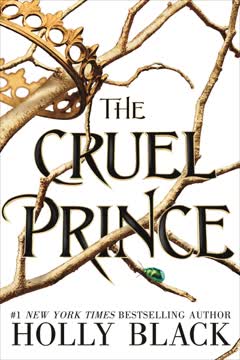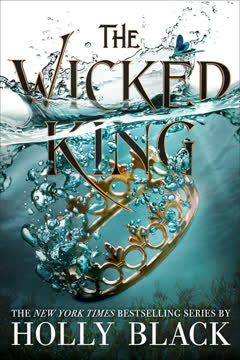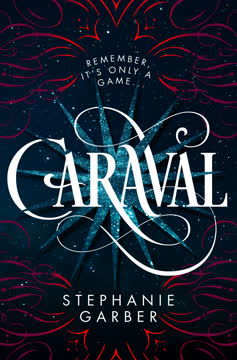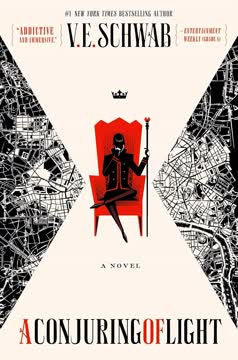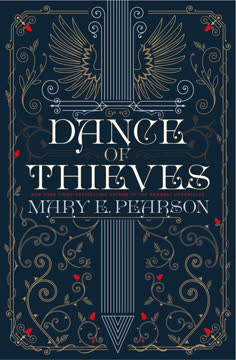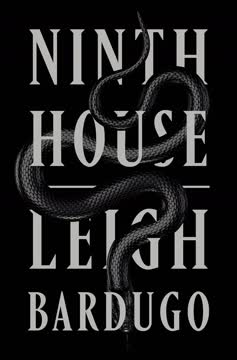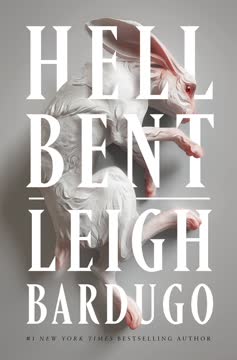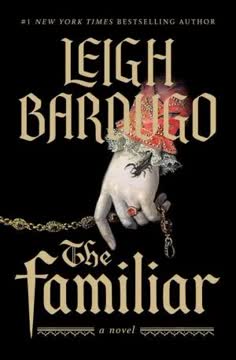Plot Summary
Shadows Over Ravka
King Nikolai Lantsov's fragile nation is beset by enemies: Fjerda's war machine to the north, the cunning Shu Han to the east, and the ever-present threat of internal unrest. As Nikolai struggles to hold his country together, a mysterious blight—an expanding, unnatural darkness—begins to devour the land, echoing the horrors of the Shadow Fold. Meanwhile, Queen Makhi of Shu Han plots to use her sister Ehri and the elite Tavgharad guard to manipulate Ravka's fate, while Nina Zenik, undercover in Fjerda, works to undermine the enemy from within. The stage is set for a conflict that will test the limits of loyalty, love, and power.
Schemes and Sacrifices
Queen Makhi's machinations to assassinate Nikolai and her own sister Ehri nearly succeed, but the plot unravels, leading to the Tavgharad's fiery suicide and Ehri's near death. In Fjerda, Nina's subterfuge grows more dangerous as she navigates the Brum household, the prince's court, and the rising cult of Saints. The Apparat, ever the opportunist, stirs religious fervor and political chaos, while the Darkling—resurrected in the body of a monk—waits in the shadows, his ambitions undimmed. Every alliance is suspect, and every victory comes at a cost.
The Blight Spreads
The blight, a creeping tide of shadow, consumes everything in its path—fields, villages, and lives—leaving only ashen wasteland. Its origin is tied to the collapse of the Shadow Fold and the failed ritual to purge Nikolai's demon. As the blight spreads to other nations, panic and superstition rise. The Darkling's connection to this devastation becomes clear, and the need to stop it grows urgent. The blight is not just a Ravkan problem; it is a threat to the world's very fabric.
Miracles and Manipulation
Nina and the Hringsa orchestrate "miracles" across Fjerda, using Grisha power to inspire hope and undermine the regime's anti-Grisha dogma. The cult of Saints grows, blurring the line between faith and propaganda. The Apparat manipulates belief for his own ends, while the Darkling's followers await his return as a savior. In the chaos, ordinary people begin to question old hatreds, and the seeds of change are sown—even as the threat of war looms.
The Demon and the Dragon
Nikolai battles the literal demon within him, a remnant of the Darkling's power, while Zoya, haunted by loss and rage, struggles with the legacy of her amplifiers and the dragon Juris. Their bond deepens as they face impossible choices: to attempt the dangerous obisbaya ritual again, to trust the Darkling's knowledge, and to risk everything for Ravka's survival. Both must decide what kind of leaders—and what kind of people—they will become.
Alliances and Betrayals
Ravka's survival depends on alliances with the Shu and the Zemeni, but every negotiation is fraught with deception. Queen Makhi's duplicity is exposed, and Ehri, with the help of Mayu and Tamar, challenges her sister's rule. The Shu khergud—Grisha transformed into living weapons—are revealed, and their fate becomes a symbol of the cost of power. In Ketterdam, Nikolai and Zoya turn to Kaz Brekker and his crew for a daring heist to steal the titanium needed for Ravka's new missiles, risking war with the Kerch.
The Price of Power
Every victory demands a sacrifice: Isaak's death, Genya's loss of David, Mayu's betrayal of her queen, and the khergud's loss of humanity. Zoya's transformation into a dragon and Nikolai's acceptance of his monstrous side are both triumphs and tragedies. The Darkling offers himself as the solution to the blight, but only at the cost of eternal torment. The line between hero and villain blurs, and the true price of power is revealed.
War on Two Fronts
Fjerda launches a two-pronged assault: a naval invasion in the south and a devastating attack in the north, using new weapons and Grisha enslaved by parem. Ravka's new missiles and Zoya's lightning turn the tide at sea, but on land, the Fjerdans unleash a sonic weapon that nearly destroys Nikolai's army. The khergud, led by Mayu and Reyem, join the fight, and the demon within Nikolai is unleashed to save his people. The cost is immense, and the outcome uncertain.
The Monster Within
In the crucible of war, Nikolai releases his demon to save Ravka, revealing his secret to his people and risking his claim to the throne. Zoya, in a moment of desperate need, transforms fully into a dragon, wielding unimaginable power to save the battlefield from destruction. Both must accept that their monstrosity is part of who they are—and that it may be the only thing that can save their country.
Saints and Sinners
The battlefield becomes a place of miracles as Zoya is hailed as a living Saint, and the Darkling manipulates events to secure his own Sainthood. The Apparat's schemes are exposed, and the cult of the Starless Saint grows. The line between sinner and Saint is blurred, and the world must decide what kind of legends it will believe in—and what kind of future it will build.
The Fall of Kings
Nikolai, exposed as a bastard and a monster, abdicates the throne in favor of Zoya, the Dragon Queen. The Ravkan nobles, desperate for peace and awed by her power, accept her rule. Fjerda's prince, secretly Hanne Brum in disguise, forges a truce, and the old order crumbles. The Darkling, seeking redemption or at least remembrance, sacrifices himself to seal the blight, becoming a martyr and a warning.
The Queen Ascends
With Nikolai at her side as consort, Zoya is crowned, embracing her Suli heritage, her Grisha power, and her role as a symbol of hope and change. She faces the challenges of leadership, the burden of loss, and the promise of a new era. The world is changed, but the work of healing and rebuilding has only begun.
Love, Loss, and Legacy
Genya mourns David, Nina and Hanne find love and purpose in Fjerda, and Mayu and Reyem seek redemption for the khergud. The survivors carry the memory of the lost, and the choices they make echo through the new world they are building. The cost of victory is counted in scars and stories, and the legacy of the past shapes the hope of the future.
The Making at the Heart
The blight is sealed by the Darkling's eternal torment, and the Fold blooms with new life. The making at the heart of the world—the power to create and destroy—is revealed to be a burden that must be shared. The survivors must decide what kind of world they will make, and what kind of people they will become.
The End and the Beginning
The war is over, but peace is fragile. Zoya and Nikolai face the challenges of ruling a changed nation, forging new alliances, and healing old wounds. The world is full of uncertainty, but also of hope. The story ends with the promise of new beginnings, and the knowledge that the work of building a better world never truly ends.
Characters
Nikolai Lantsov
Nikolai is the charismatic, inventive king of Ravka, beloved by his people but tormented by a literal demon within him—a remnant of the Darkling's power. His leadership is defined by wit, pragmatism, and a willingness to sacrifice himself for his country. Nikolai's journey is one of self-acceptance: he must embrace both his monstrous and human sides to save Ravka. His relationship with Zoya deepens from mutual respect to love, and his ultimate abdication of the throne in her favor is both an act of humility and hope. He is a builder, a fixer, and a survivor, whose legacy is measured not by blood but by the future he helps create.
Zoya Nazyalensky
Zoya is Ravka's most powerful Grisha and a formidable general, marked by loss, anger, and ambition. Her journey is one of transformation—literally, as she becomes a dragon, and figuratively, as she learns to open her heart to love, friendship, and the possibility of being more than a weapon. Zoya's Suli heritage and her connection to the dragon Juris shape her identity, and her ascension to the throne is both a personal and political revolution. She is haunted by the past but determined to build a better future, and her mercy on the battlefield becomes the foundation of her legend as a living Saint.
Nina Zenik
Nina is a Heartrender working undercover in Fjerda, mourning the loss of Matthias while risking everything to save Grisha and undermine the enemy. Her journey is one of resilience and reinvention: she stages miracles, manipulates faith, and navigates the treacherous politics of the Brum household and the Fjerdan court. Her love for Hanne Brum, a trans Grisha, becomes a source of hope and transformation for both of them. Nina's choices are driven by compassion and a fierce sense of justice, and her willingness to forgive and build bridges shapes the future of Fjerda and Ravka alike.
The Darkling (Aleksander Morozova)
The Darkling, resurrected in the body of a monk, is both the architect of Ravka's suffering and its unlikely savior. His charisma, intelligence, and ruthlessness are matched only by his loneliness and longing for legacy. He manipulates faith, orchestrates miracles, and ultimately offers himself as the sacrifice to seal the blight, choosing eternal torment over oblivion. His relationship with Zoya, Genya, and the Grisha is fraught with betrayal and regret, and his final act is both a warning and a plea for remembrance.
Genya Safin
Genya is a Tailor whose beauty and strength have been forged through suffering. Her marriage to David Kostyk is a rare happiness, shattered by his death in the bombing of Os Alta. Genya's resilience and compassion make her a pillar of the Grisha, and her forgiveness of the Darkling is hard-won. She supports Zoya's rise to the throne and helps guide Ravka into a new era, carrying the memory of the lost and the hope of the living.
Mayu Kir-Kaat
Mayu is a Tavgharad warrior who becomes an assassin, a traitor, and ultimately a hero. Her love for her twin brother Reyem, transformed into a khergud, drives her to betray Queen Makhi and fight for justice. Mayu's journey is one of self-discovery and redemption, as she learns to question authority, make impossible choices, and find purpose beyond obedience.
Hanne Brum
Hanne is the child of Jarl Brum, raised to hate Grisha but secretly one herself. Their relationship with Nina is transformative, and their decision to assume the identity of Prince Rasmus after his death is both a personal liberation and a political revolution. Hanne's journey is about embracing true identity, challenging tradition, and daring to imagine a new future for Fjerda.
Queen Makhi Kir-Taban
Makhi is the cunning queen of Shu Han, willing to sacrifice anyone—including her own sister—for power. Her creation of the khergud and her betrayal of Ehri lead to her downfall. Makhi's story is a cautionary tale about the cost of ambition and the limits of control.
Tamar and Tolya Yul-Bataar
Tamar and Tolya are Grisha twins who serve as bodyguards, spies, and leaders. Tamar's marriage to Nadia and Tolya's poetic soul add depth to their fierce loyalty and martial prowess. They are instrumental in forging alliances, rescuing the khergud, and supporting Zoya's rise.
The Apparat
The Apparat is a survivor, always aligning himself with power. He manipulates faith, foments unrest, and seeks to control the narrative of Saints and sinners. His downfall comes when his own tools—miracles, faith, and the Grisha—turn against him.
Plot Devices
Dual Narratives and Shifting Perspectives
The novel alternates between Nikolai, Zoya, Nina, Mayu, and the Darkling, among others, providing a panoramic view of the conflict. This structure allows the reader to see the interconnectedness of personal and political struggles, the impact of choices across borders, and the ways in which power, faith, and love shape destinies.
The Blight as Metaphor and Threat
The blight is both a literal danger and a metaphor for the wounds inflicted by ambition, war, and the abuse of magic. Its spread is tied to the failures and hubris of the past, and its resolution requires sacrifice, humility, and a willingness to share burdens.
Miracles, Faith, and Propaganda
The manipulation of faith—by Nina, the Apparat, and the Darkling—serves as both a weapon and a means of hope. The rise of new Saints, the blurring of truth and legend, and the power of stories to inspire or control are central to the novel's exploration of leadership and revolution.
Transformation and Identity
Nikolai's struggle with his demon, Zoya's transformation into a dragon, Hanne's gender transition and assumption of the prince's identity, and the khergud's loss of humanity all reflect the novel's preoccupation with the cost and possibility of change. The acceptance of one's true self—and the willingness to embrace monstrosity or difference—becomes a source of strength.
Sacrifice and Redemption
Every major victory in the novel is bought with loss: Isaak's death, David's sacrifice, the Darkling's eternal torment, and the abdication of thrones and dreams. The willingness to pay the price, to forgive, and to seek redemption is what distinguishes heroes from villains.
Heist and Espionage Elements
The theft of titanium from Kerch, Nina's undercover work in Fjerda, and the rescue of the khergud add layers of suspense and showcase the importance of cunning, teamwork, and risk-taking in the face of overwhelming odds.
Analysis
Rule of Wolves is a sweeping, emotionally charged conclusion to the Grishaverse's central saga, blending epic fantasy with sharp political intrigue and deep psychological insight. Leigh Bardugo interrogates the nature of power, the cost of leadership, and the possibility of redemption in a world scarred by war and prejudice. The novel's greatest strength lies in its refusal to offer easy answers: every victory is tainted by loss, every act of mercy is fraught with risk, and every legend is built on the bones of the fallen. By centering transformation—of individuals, nations, and even myths—Bardugo suggests that true change is possible only when we embrace our flaws, share our burdens, and dare to imagine a better world. The story's diverse cast, nuanced exploration of gender and identity, and unflinching look at trauma and healing make it both timely and timeless. Ultimately, Rule of Wolves is a testament to the power of hope, the necessity of sacrifice, and the enduring strength of those who choose to survive and build anew.
Last updated:
FAQ
Rule of Wolves Q&A
Q: Who are the main characters in Rule of Wolves?
A: The main characters in Rule of Wolves include:
- Nikolai Lantsov, the king of Ravka
- Zoya Nazyalensky, Nikolai's general and a powerful Grisha
- Nina Zenik, a Grisha spy working in Fjerda
- The Darkling, the resurrected villain
- Genya Safin, a Grisha Tailor
- Hanne Brum, a Fjerdan noble who is secretly Grisha
Q: What is the basic plot of Rule of Wolves?
A: The basic plot revolves around Ravka's fight for survival against threats from multiple fronts:
- Ravka is dealing with the blight, a magical plague spreading across the land
- Fjerda is threatening invasion from the north
- The Shu Han are creating super-soldiers called khergud to use against Ravka
- The Darkling has been resurrected and is manipulating events
Nikolai and Zoya are trying to save Ravka through political maneuvering, military strategy, and seeking magical solutions. Meanwhile, Nina is working as a spy in Fjerda to undermine their plans from within.
Q: How does Nikolai's character develop in this book?
A: Nikolai continues to struggle with the demon inside him, a remnant of the Darkling's power. He grapples with his identity as both a clever inventor/leader and a monster. Over the course of the book, he comes to accept both sides of himself.
His relationship with Zoya also deepens from mutual respect to romantic love. By the end, Nikolai makes the decision to abdicate the throne to Zoya, recognizing that she would be a better ruler for Ravka's future.
Q: What happens with Zoya in Rule of Wolves?
A: Zoya undergoes major transformation in this book, both literally and figuratively:
- She discovers her Suli heritage and connection to dragons
- She physically transforms into a dragon, gaining immense power
- She learns to open her heart to love and friendship
- She ascends to become Queen of Ravka by the end
Her journey is about embracing her full identity and power, while also learning to be vulnerable. She becomes a symbol of a new era for Ravka.
Q: How does Nina's storyline progress?
A: Nina continues her undercover work in Fjerda, where she:
- Stages fake miracles to manipulate Fjerdan faith and politics
- Falls in love with Hanne Brum, the transgender child of her enemy
- Works to save Grisha and undermine Fjerda's plans to invade Ravka
- Helps Hanne assume the identity of Prince Rasmus to change Fjerda from within
Her arc is about healing from past trauma, finding new love, and working to create change through cunning and compassion rather than just violence.
Q: What role does the Darkling play in this book?
A: The Darkling is resurrected in the body of a monk. He manipulates events from the shadows, including:
- Orchestrating miracles and religious fervor
- Attempting to regain control of the Grisha
- Seeking a way to stop the blight
Ultimately, he chooses to sacrifice himself to seal away the blight, accepting eternal torment instead of oblivion. His arc is a complex exploration of villainy, redemption, and the desire to leave a lasting legacy.
Q: How does the book explore themes of identity and transformation?
A: Transformation is a major theme throughout the book:
- Nikolai struggles with his dual nature as man and monster
- Zoya literally transforms into a dragon
- Hanne transitions genders and assumes a new identity as prince
- The khergud super-soldiers are transformed from humans into something else
- Nina reinvents herself as a spy and miracle worker
The book explores how change can be both empowering and terrifying, and how accepting one's true identity is a source of strength.
Q: What role do faith and religion play in the story?
A: Miracles, faith, and religious manipulation are key elements of the plot:
- Nina stages fake miracles to influence Fjerdan politics
- The Apparat uses religious fervor to control the populace
- The Darkling manipulates faith to further his goals
- New Saints arise, blurring the line between legend and reality
The book explores how belief can be both a tool for control and a source of hope and change.
Q: How does the book handle themes of sacrifice and redemption?
A: Sacrifice is a recurring theme, with many characters having to give up something important:
- Isaak sacrifices his life
- David dies to save others in the bombing of Os Alta
- The Darkling chooses eternal torment to seal the blight
- Nikolai gives up the throne
Redemption is explored through characters like the Darkling and Genya, showing how past villains or victims of abuse can choose to do good. The book suggests that true heroism often requires great personal cost.
Q: How does the book end? What is the resolution?
A: The ending brings resolution to multiple plotlines:
- The blight is sealed away by the Darkling's sacrifice
- Ravka defeats the Fjerdan invasion
- Zoya becomes Queen of Ravka, with Nikolai abdicating
- Hanne takes on the identity of Prince Rasmus to change Fjerda from within
- Nina chooses to stay in Fjerda with Hanne
- The Shu Han threat is neutralized and Queen Makhi is overthrown
The ending sets up a new political landscape and suggests hope for positive change, while acknowledging the sacrifices made to reach that point.
Review Summary
Rule of Wolves received mostly positive reviews, with readers praising the character development, plot twists, and satisfying conclusion to the Grishaverse series. Many appreciated the return of beloved characters and the expansion of the world-building. Some criticized the pacing and felt certain storylines were unnecessary. The romance between Zoya and Nikolai was well-received. While some found the book too long and convoluted, others considered it a fitting end to the series, with an intriguing setup for potential future stories.
Grishaverse Series
Similar Books
Download PDF
Download EPUB
.epub digital book format is ideal for reading ebooks on phones, tablets, and e-readers.
